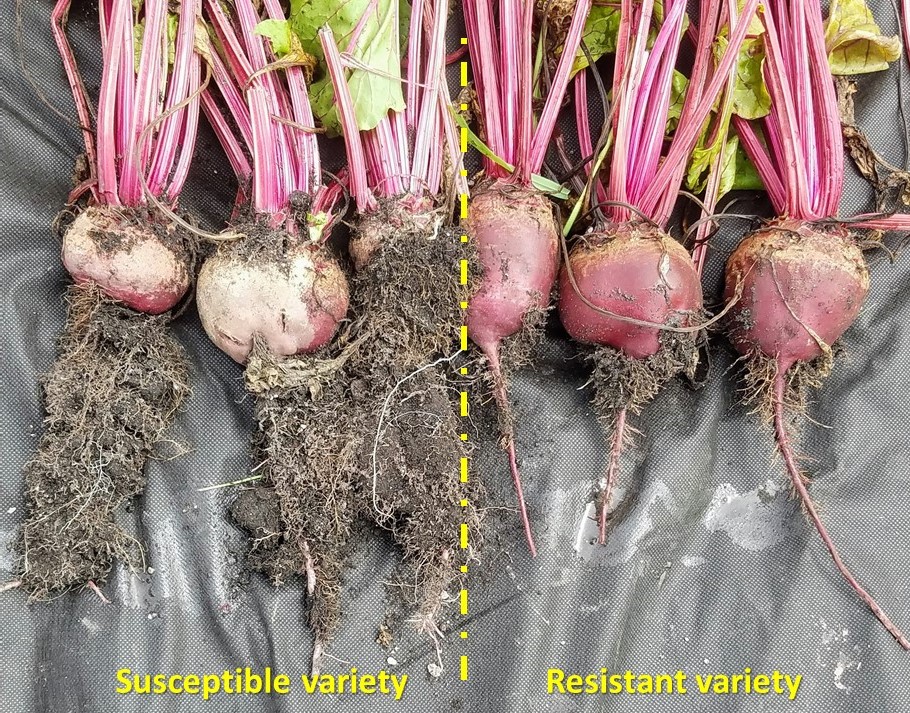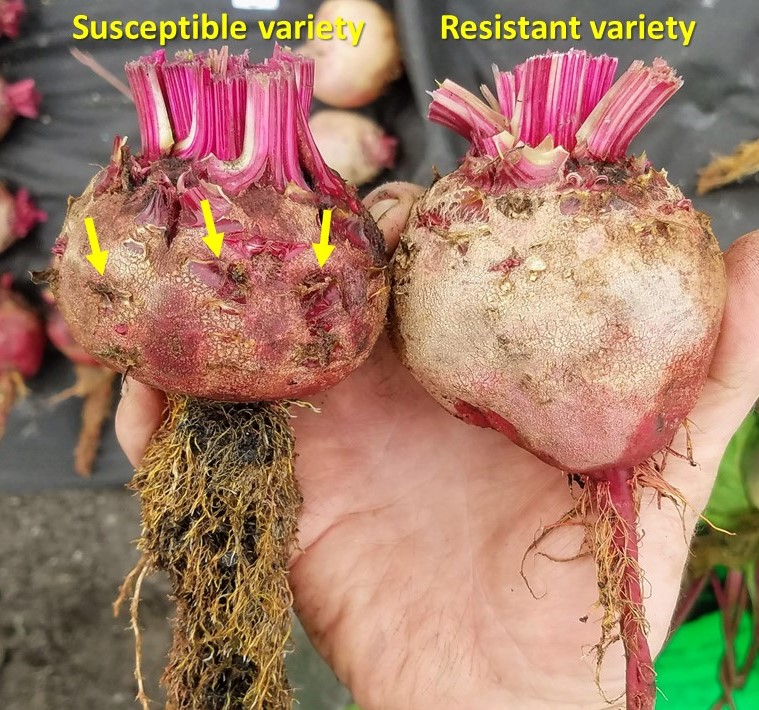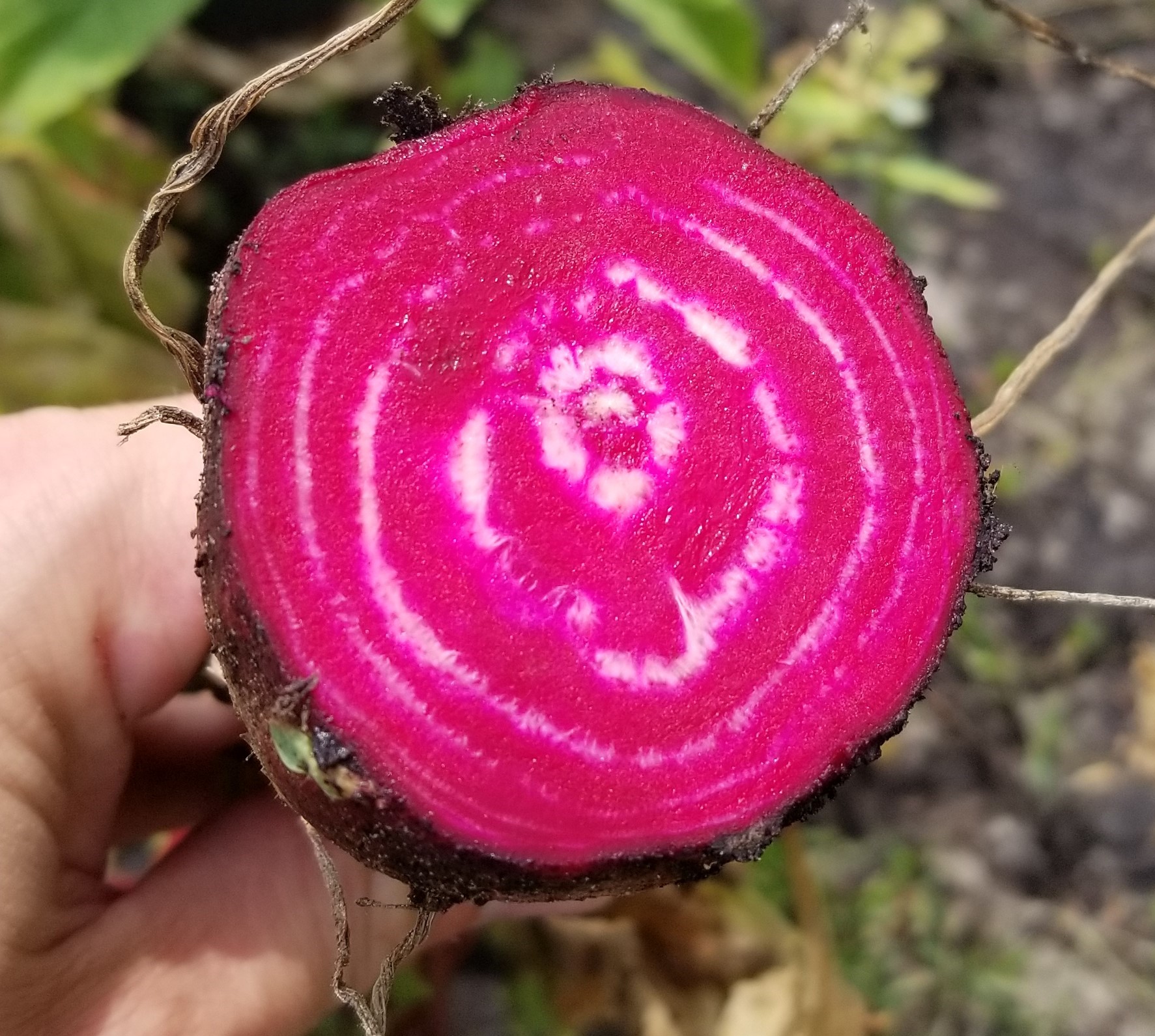Symptoms of Rhizomania, a new disease for Michigan red beets
Know the symptoms of Rhizomania and more about this new disease.

Growers contacted Michigan State University Extension experts in 2017 after noticing extremely hairy red beets on their farm. These beets tested positive for beet necrotic yellow-vein virus (BNYVV), the pathogen causing the disease Rhizomania. Below are some questions and answers about this new disease for red beets in Michigan.
What causes the disease Rhizomania?
The disease is caused by a unique partnership between a soil- borne, fungal-like organism called Polymyxa betae and the virus BNYVV. Polymixa betae forms long-lasting, survival structures called sporosori that can last in the soil for 10 years or more. In the presence of beet roots, soil temperatures over 59 degrees Fahrenheit and free water (from rain or irrigation), they release zoospores that swim to the beet roots. The zoospores then infect the roots with BNYVV, which causes the symptoms associated with Rhizomania.
Where did Rhizomania come from?
Rhizomania was first detected in the U.S. on California sugarbeets in 1984. Since then, it has spread to all the major U.S. sugarbeet production regions, including a first report from Michigan sugarbeets in 2002.
How does Rhizomania spread?
Anything that moves soil can spread Rhizomania. This includes movement of infested soil associated with field preparation and planting equipment and cull beets dumped into production fields. It is not known to be seed borne.
What are the symptoms of Rhizomania in red beets?
- Bearded beets: Infected beets often have excessive growth of very fine, secondary roots along the tap root. When the beets are pulled, soil clings to the roots, giving them a “bearded” appearance (Figures 1 and 2). This is the easiest symptom to recognize and is consistently associated with the disease.
- Beets with large necks: Growers have also noted that infected beets have excessive top growth with a proliferation of petioles. On a healthy beet, petioles emerge from a small neck at the top. The top has rounded shoulders. Beets with Rhizomania symptoms have large necks with petioles emerging across the top and even down the side of the beet. The diseased root lacks the round shoulders of healthy beets (Figures 1 and 3).
- White vascular tissue: The internal (vascular) tissue of diseased beets may be whiter than normal and stand out from the rest of the root tissue (Figure 4).



How can I confirm Rhizomania?
Dig up several beet roots with symptoms and include the root hairs and soil. These can be submitted to Michigan State University Plant & Pest Diagnostics to test for the presence of BNYVV.
What can I do to control Rhizomania?
If you confirm the presence of Rhizomania on your farm, do everything you can to limit spread of infested soil and consider planting resistant cultivars (Figure 2).



 Print
Print Email
Email

